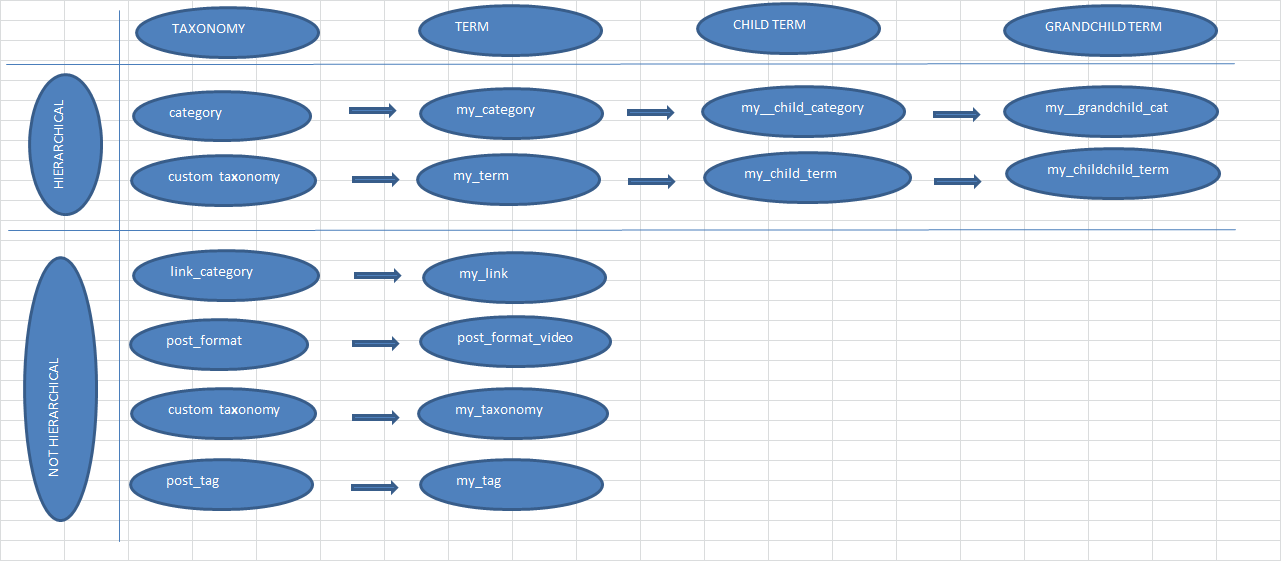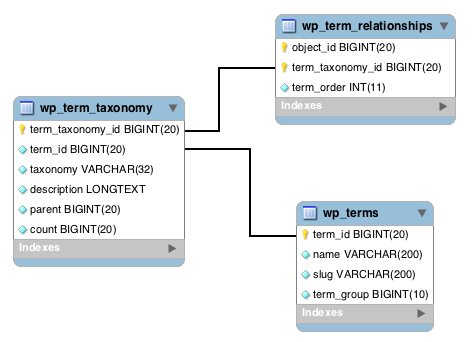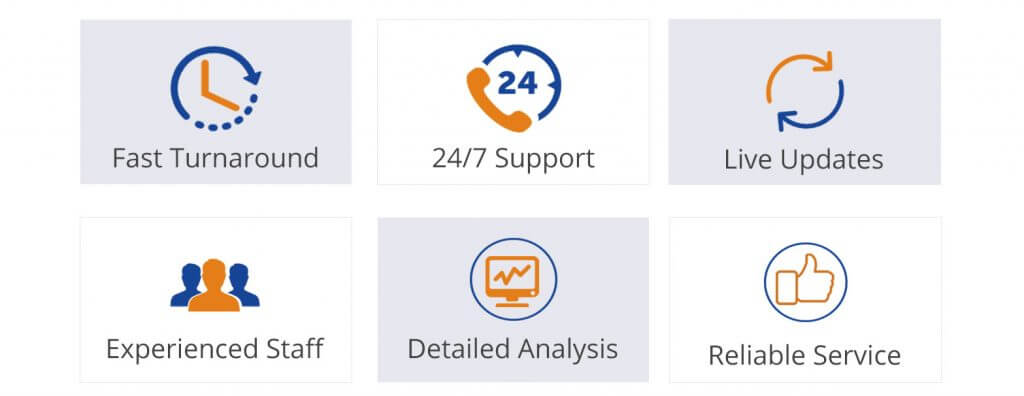In WordPress, the “term” is an item in a taxonomy. So if you have added some categories to your posts, each of those categories is defined as a term in the category of taxonomy. Now a new question will arise i.e. What is “taxonomy”?
As, articles posted by the admin of a WordPress site are called posts. Posts are arranged in reverse sequential order in WordPress.
Where WordPress is an open-source platform that you would have to download and host it on a webserver. It is a completely customizable CMS. As Content Management System (CMS) is a system which allows users to easily create, edit, organize and publishing content.
Where web server is a software which receives your request for accessing a web page. It runs only a couple of security checks on your HTTP request and takes you to the web page.
So in WordPress, a “taxonomy” is one of those words that most people never hear or use. Basically, a taxonomy is a way of grouping things together. The name for different groupings in taxonomy is called terms.
The basic diagram on taxonomies and their relationships in WordPress :

For example, if we have a bunch of different types of animals. We can group them together according to various characteristics and then assign those groups names. Using groupings of animals, we might call one group “birds”, and another group “fish”. “Fish” and “birds” are terms in our taxonomy. As an example from WordPress, a category or tag (see next section) is a term.
Here, Categories in WordPress are a very convenient way to organize your posts. It makes a parent and child categories possible differently, by making a hierarchical arrangement of your posts.
In addition to that one post can be placed in more than one category. Tag in WordPress is one of the default tools one can use to categorize their WordPress posts. With tags, it is possible to get instant traffic for a blog or blog-based site for an empty niche on the internet.
In this online era, worldwide entrepreneurs want to make their presence on the web by securing top SEO ranking. Because higher rank in search result generates the traffic on the site as well as increases the brand’s position and works as a key to business assets.
As SEO stands for Search Engine Optimization. Where, the search engine is a service which allows all internet user to search for any content, query, and product throughout the world wide web.
Search engines show the content in the form of websites, images, videos or other online data. The result shown by the search engine for any keyword is known as the search engine results page (SERP). SERP gives competitive advantages to WordPress website.
You can add taxonomy terms by going to the taxonomy editing screen (e.g. Posts > Categories) or by adding them when you’re editing a post.
How WordPress stores Taxonomies and Terms?
WordPress uses a one-to-many relationship, which is created by using three tables.
- wp_term_relationships
- wp_term_taxonomy
- Wp_terms
WordPress comes with three built-in taxonomies, that are:
- Category
- Tag
- Link Category
The relationship can be understood by –

Where categories and tags are a bit like posts and pages in that they are the same type of content (taxonomies) but behave differently by default, in that categories are hierarchical and tags are not. As pages are like posts. Pages can be managed in a hierarchical structure in WordPress.
Similarly, the link category taxonomy works somewhat in a similar way to tags and could theoretically be used for any object type, but by default, it is not displayed in the post editing screen and is in the link editing screen if links have been enabled.
Examples
Though Get Term offers some handy information, unfortunately, it lacks a link value.
| $term = get_term( $term_id, $taxonomy );
Gives you term slug: e.g.: term-slug-example $slug = $term->slug; Gives you term name: e.g. Term Name Example $name = $term->name; Gives you term description: e.g. This is my new cool custom term. $desc = $term->description; |
Conclusion
Terms and Taxonomies are a powerful WordPress feature which let you add much more flexibility to your sites. They are related to two other content types that are the posts and the links, and the database structure means that this is a many-to-many relationship, where one post can have multiple terms across multiple taxonomies, and one term can be assigned to multiple posts or links.
We hope that this blog helped you thoroughly. If you liked the information please share it with others also. Still, you have any question regarding Terms in WordPress you can share it in the comment section.

Get best and prompt help from our WordPress Website Maintenance team, Dial +1-888-738-0846 (Toll-Free). We will be glad to help you.

